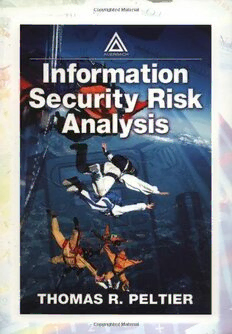
Information Security Risk Analysis PDF
294 Pages·2001·1.204 MB·English
Most books are stored in the elastic cloud where traffic is expensive. For this reason, we have a limit on daily download.
Preview Information Security Risk Analysis
Description:
Risk is a cost of doing business. The question is, "What are the risks, and what are their costs?" Knowing the vulnerabilities and threats that face your organization's information and systems is the first essential step in risk management. Information Security Risk Analysis shows you how to use cost-effective risk analysis techniques to identify and quantify the threats--both accidental and purposeful--that your organization faces. The book steps you through the qualitative risk analysis process using techniques such as PARA (Practical Application of Risk Analysis) and FRAP (Facilitated Risk Analysis Process) to:Evaluate tangible and intangible risksUse the qualitative risk analysis processIdentify elements that make up a strong Business Impact AnalysisConduct risk analysis with confidenceManagement looks to you, its information security professional, to provide a process that allows for the systematic review of risk, threats, hazards, and concerns, and to provide cost-effective measures to lower risk to an acceptable level. You can find books that cover risk analysis for financial, environmental, and even software projects, but you will find none that apply risk analysis to information technology and business continuity planning or deal with issues of loss of systems configuration, passwords, information loss, system integrity, CPU cycles, bandwidth, and more. Information Security Risk Analysis shows you how to determine cost effective solutions for your organization's information technology.
See more
The list of books you might like
Most books are stored in the elastic cloud where traffic is expensive. For this reason, we have a limit on daily download.
